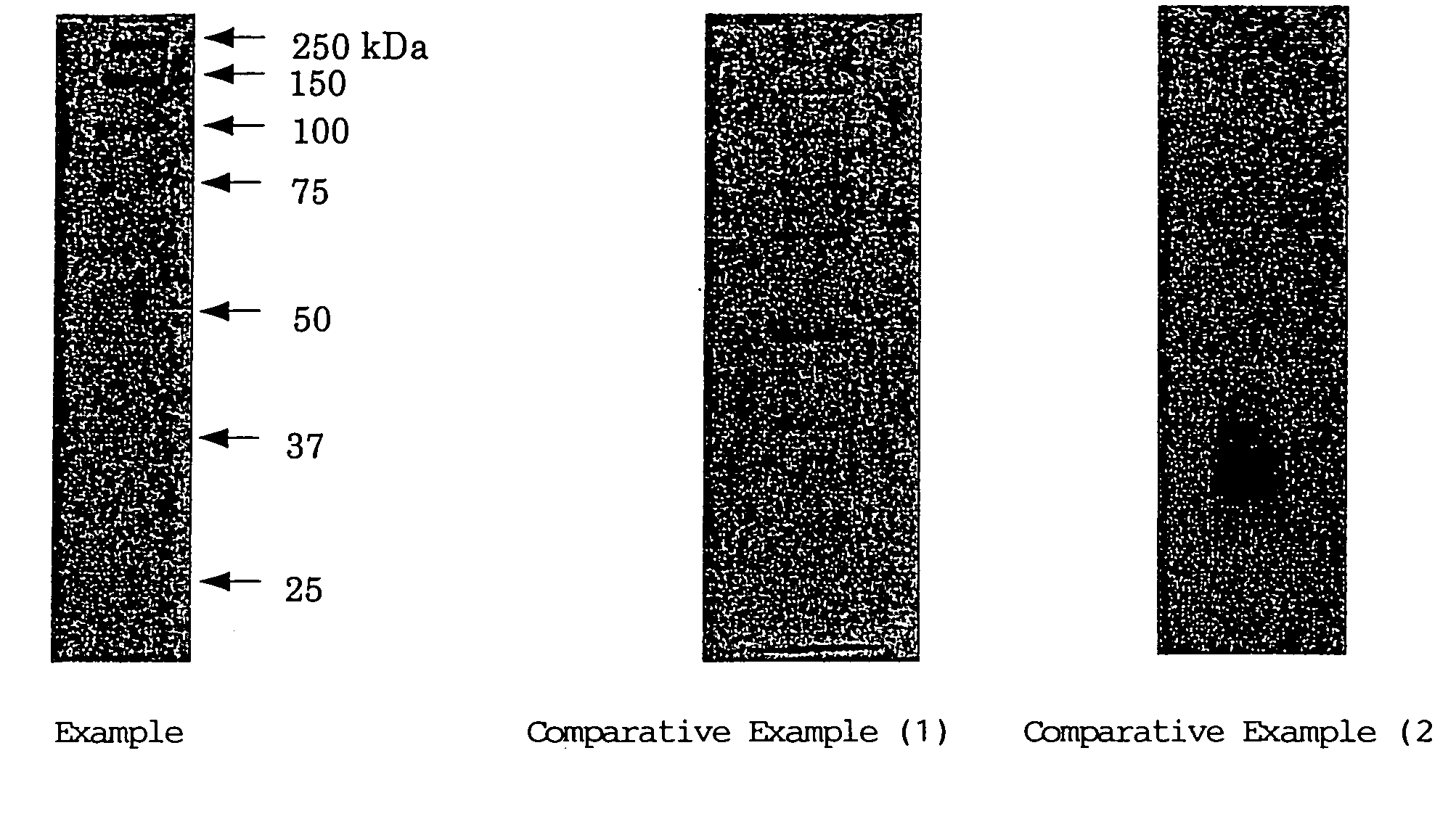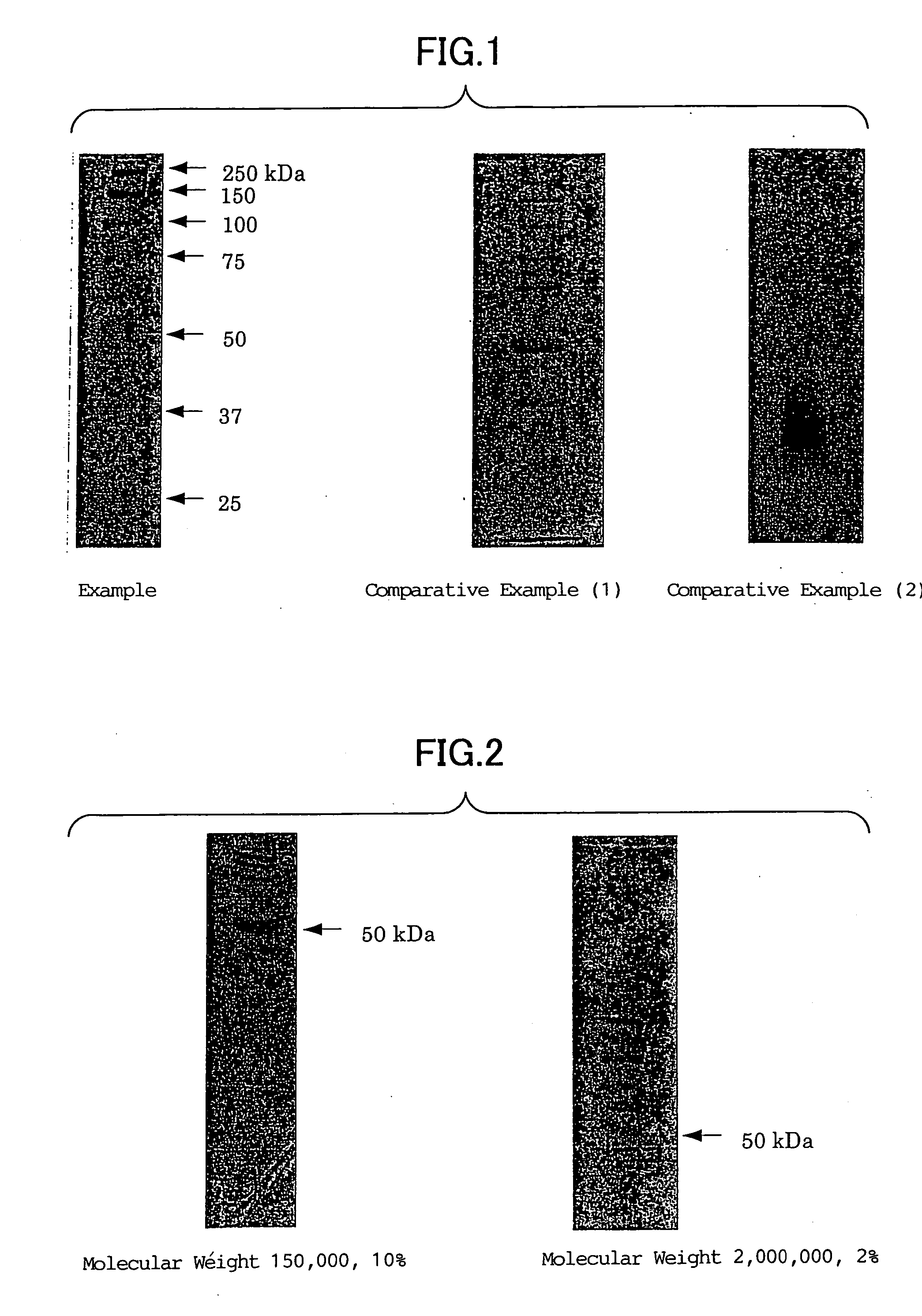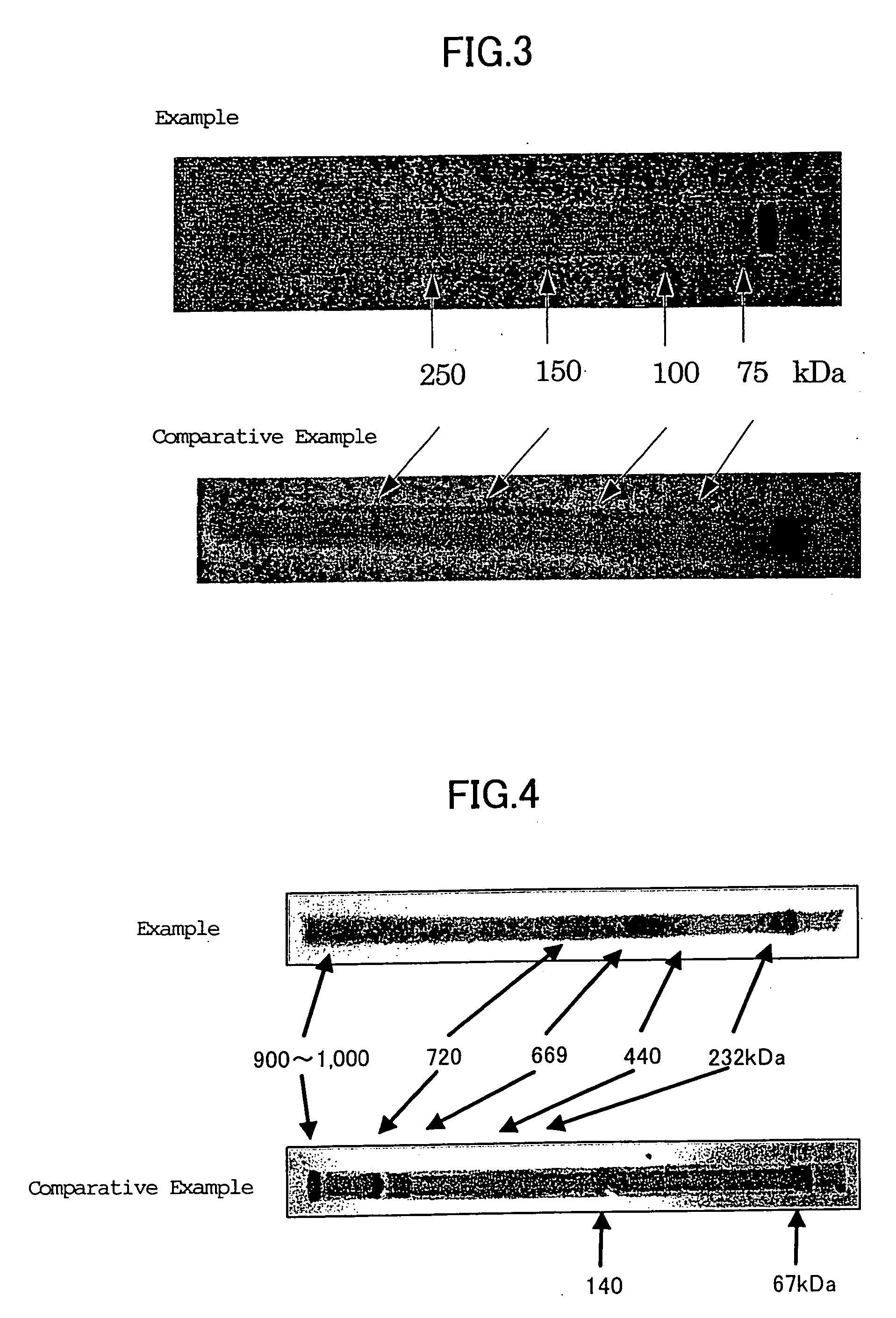Gel for electrophoresis and method for preparing the same
- Summary
- Abstract
- Description
- Claims
- Application Information
AI Technical Summary
Benefits of technology
Problems solved by technology
Method used
Image
Examples
example 1
Preparation of Single-stranded Schizophyllan
[0095] A. Triple-stranded schizophyllan (10.0 g) having a helical structure (molecular weight thereof as the triple-strand: about 450,000) was dissolved in 1000 mL of a 0.5N—NaOH solution at room temperature with stirring. The resulting solution was packed in a cellulose tube (having a pore size of 50 Å) and then it was dialyzed against deionized water till the dialyzate became neutral. Thereafter, the aqueous schizophyllan solution remaining in the cellulose tube was lyophilized to thus give 9.79 g of single-stranded schizophyllan having a molecular weight of about 150,000.
[0096] B. Triple-stranded schizophyllan (5.0 g) having a helical structure (molecular weight thereof as the triple-strand: about 6,000,000) was dissolved in 100 mL of a 0.5N—NaOH solution at room temperature with stirring. The resulting solution was packed in a cellulose tube and then it was dialyzed against deionized water till the dialyzate became neutral. Thereafte...
example 2
Preparation of Gel
1-1. Preparation of Slab Gel According to Heating Method for Forming Gel
[0099] The single-stranded schizophyllan prepared in the section A, B or C of Example 1 was homogenized together with deionized water to form a suspension of the single-stranded schizophyllan. The suspension was deaerated under a reduced pressure, introduced into a heating type gel-forming device and then converted into a gel by heating the same at 120° C. for 20 minutes to thus give a slab gel for electrophoresis (70 mm×85 mm×3 mm).
1-2. Preparation of Denaturing Type Disc Gel According to Heating Method for Forming Gel
[0100] The single-stranded schizophyllan prepared in the section A, B or C of Example 1 was homogenized together with 11.1 mL of deionized water and 3.75 mL of a 1.5 M Tris-HCl buffering solution (pH 8.8), followed by the deaeration of the resulting dispersion under a reduced pressure and the subsequent addition of 0.15 mL of a 10% SDS aqueous solution to thus give a suspen...
example 3
Slab Gel Electrophoresis of Proteins
[0111] A slab gel (70 mm×85 mm×3 mm) having a glucan concentration of 6% by mass was prepared from the single-stranded schizophyllan having a molecular weight of about 150,000 prepared in Example 1 by the same procedures used in the section 1-1 of Example 2. The resulting gel was immersed, overnight, in a gel buffer (ion-exchanged water / 1.5 M Tris-HCl buffer (pH 8.8) / 10% SDS solution having a mixing ratio of 111:37.5:1.5 (v / v)) to thus equilibrate the gel. Then this equilibrated gel was transferred to the gel tray of a submarine type small-sized electrophoresis device filled with a running buffer (25 mM Tris, 192 mM glycine, 0.1% SDS, pH 8.3) and then a protein molecular weight marker (BIO RAD, Precision Standard, Molecular Weight Range: 10-250 kDa) was run at a constant current of 20 mA till a marker dye BPB (Bromophenol Blue) moved up to a position about 5 mm apart from the edge of the gel.
[0112] Electrophoresis was likewise conducted using (1...
PUM
 Login to View More
Login to View More Abstract
Description
Claims
Application Information
 Login to View More
Login to View More - R&D
- Intellectual Property
- Life Sciences
- Materials
- Tech Scout
- Unparalleled Data Quality
- Higher Quality Content
- 60% Fewer Hallucinations
Browse by: Latest US Patents, China's latest patents, Technical Efficacy Thesaurus, Application Domain, Technology Topic, Popular Technical Reports.
© 2025 PatSnap. All rights reserved.Legal|Privacy policy|Modern Slavery Act Transparency Statement|Sitemap|About US| Contact US: help@patsnap.com



